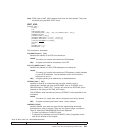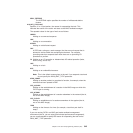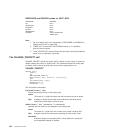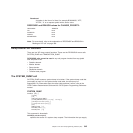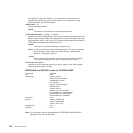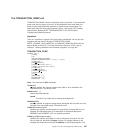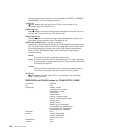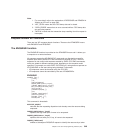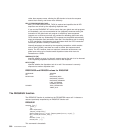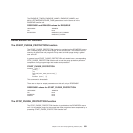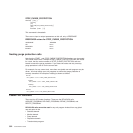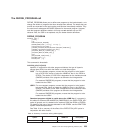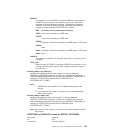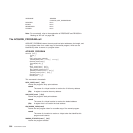
Note:
1. For more detail, refer to the explanation of RESPONSE and REASON in
“Making an XPI call” on page 308.
2. ‘NOT_OPEN’ means that the CICS dump data set is closed.
3. ‘OPEN_ERROR’ means that an error occurred while a CICS dump data
set was being opened.
4. ‘PARTIAL’ means that the transaction dump resulting from this request is
incomplete.
Enqueue domain XPI functions
There are two XPI enqueue domain functions. These are the DFHNQEDX macro
calls ENQUEUE and DEQUEUE.
The ENQUEUE function
The ENQUEUE functions is provided on the DFHNQEDX macro call. It allows you
to enqueue on a named resource.
All enqueues created by XPI ENQUEUE commands are allocated to a specific
enqueue pool called “DISPATCH” and are treated as internal to CICS. Thus XPI
enqueues do not conflict with enqueues created by EXEC CICS ENQ commands,
which are added to different enqueue pools, depending on the enqueue model
specified. For example, an active EXEC CICS ENQ on a string does not prevent an
XPI ENQUEUE on the same string being obtained. Furthermore:
v XPI enqueues cannot be browsed using the CICS SPI.
v XPI enqueues cannot be controlled by the use of ENQMODELs.
ENQUEUE
DFHNQEDX [CALL,]
[CLEAR,]
[IN,
FUNCTION(ENQUEUE),
ENQUEUE_NAME1(address,length),
[ENQUEUE_NAME2(address,length),]
MAX_LIFETIME(DISPATCHER_TASK),
[WAIT(YES|NO),]
[PURGEABLE(YES|NO),]]
[OUT,
[ENQUEUE_TOKEN(name4),]
[DUPLICATE_REQUEST,]
RESPONSE (name1 | *),
REASON(name1 | *)]
This command is threadsafe.
DUPLICATE_REQUEST
indicates that the requesting dispatcher task already owns the resource being
enqueued.
ENQUEUE_NAME1(address,length)
specifies the high-order part of name to be enqueued.
ENQUEUE_NAME2(address,length)
specifies the low-order part, if any, of name to be enqueued.
ENQUEUE_TOKEN(name4)
enables a subsequent DEQUEUE request to identify the resource by a token
Chapter 3. The user exit programming interface (XPI) 349



